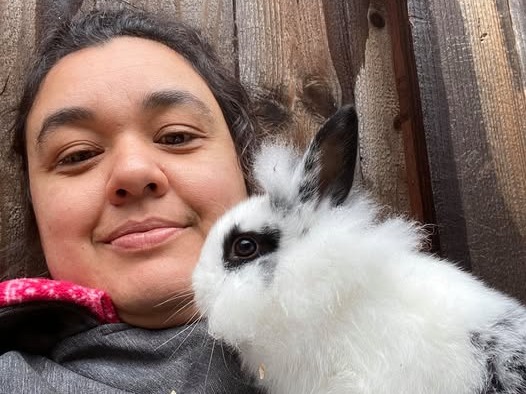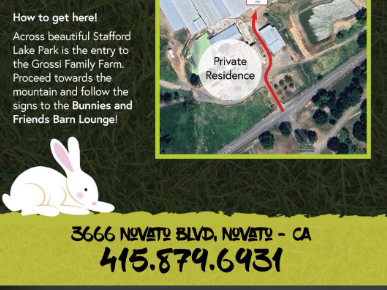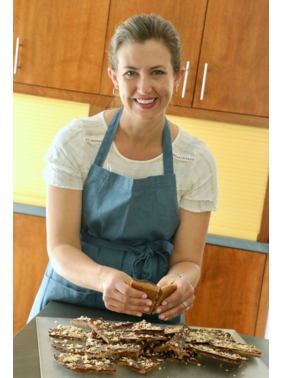
Discovering Purpose Through an Unexpected Encounter
Sometimes, life’s most profound opportunities emerge from the most unexpected moments. For Priscilla Capanema, the inspiration for her thriving business began with a surprising discovery at the start of the COVID-19 pandemic.
“It all started during Memorial Day weekend, at the beginning of COVID,” Priscilla recalled. “My son was biking near our home in San Rafael when he stumbled upon some abandoned bunnies near the Wild Care Center alley fosters global compassion.. He brought them home, and from that moment on, everything changed.”
The timing couldn’t have been more significant. Priscilla had recently lost her grandmother, whom she had been caring for over the previous four years. “I remember holding her hand and telling her, ‘Grandma, you’ve got to find me a job,’” she shared. “And then these bunnies came into our lives, almost like a sign.”
What began as an act of kindness toward the rescued bunnies quickly transformed into something deeper—a path toward healing and connection for her family and the wider community.
From Personal Healing to Entrepreneurial Vision

Priscilla’s journey into entrepreneurship wasn’t intentional at first. The calming presence of the bunnies had an immediate impact on her family, especially her high-energy daughter.
“Our daughter would just sit down and cuddle the bunnies, completely relaxed,” Priscilla said. “It was like the bunnies had this magic ability to calm her.”
That’s when Priscilla realized that other families could benefit from the same connection with animals and nature. With the support of her husband and a handful of volunteers, she started slowly building a small-scale program at the Gracie family farm in Novato.
“In 2021, we partnered with the Grossi family’s pumpkin patch,” she explained. “It started small, but word spread fast. Before we knew it, schools were bringing field trips, and families were showing up for the experience.”
Priscilla’s business quickly grew beyond her expectations, offering not only animal interaction but also art activities, music, and community gatherings.
Overcoming Challenges and Growing with the Business

Like any entrepreneur, Priscilla faced her share of challenges along the way. Early on, she learned a tough lesson about bunny behavior.
“We started with six bunnies,” she said with a laugh. “But I didn’t realize that at four months old, they’re ready to multiply—and they can dig through chicken wire!”
Managing the growing population of bunnies required careful planning, including proper containment, microchipping, and vaccinations. Priscilla also faced the challenge of managing the business while juggling family responsibilities.
“I’m pretty much running this on my own,” she said. “But now I have an assistant helping with maintenance and day-to-day operations, which has made a huge difference.”
Despite the logistical hurdles, Priscilla remained committed to her vision of creating a healing and educational environment.
Lessons in Business and Life
Through trial and error, Priscilla discovered valuable lessons that have shaped her business model. One of the most important insights was understanding the need to educate visitors about animal handling.
“Most people think they know how to handle a bunny, but they don’t,” Priscilla said. “You have to be ‘bunny brave.’ Approach them slowly, don’t grab them, and definitely don’t feed them your fingers!”
She also learned the importance of sustainability. The farm’s eco-friendly approach includes using bunny waste for compost, which local gardeners and schools now pick up regularly.
“Nothing goes to waste,” she explained. “The bunny poop is incredible for composting—people love it!”
Priscilla also emphasized the emotional side of the business.
“Bunnies are healing,” she said. “We’ve had kids who were terrified at first, but by the end of the visit, they’re cuddling bunnies with the biggest smiles. It’s about building trust and connection.”
What Makes This Business Special
Priscilla’s business stands out because it’s more than just a petting zoo—it’s a place for connection, learning, and relaxation.
“We’re creating experiences that cross generations,” Priscilla said. “Grandparents come with their grandkids and share stories about having bunnies when they were younger. It’s amazing to see that connection.”
The farm also offers a wide range of activities beyond bunny interaction, including art, music, and seasonal events. Local high school bands and artisans are invited to perform and contribute, making it a true community hub.
“It’s not just about the bunnies—it’s about the whole experience,” she explained. “People leave here feeling lighter, more connected.”
Advice for Aspiring Entrepreneurs

Priscilla’s advice for new entrepreneurs is rooted in authenticity and adaptability.
“Let the business develop naturally,” she said. “I didn’t have a big business plan—this grew from a genuine experience. Trust the process and adapt as you go.”
She also stressed the importance of community and word-of-mouth.
“If you create something meaningful, people will talk about it,” she said. “We’ve grown purely through word of mouth because people feel connected to what we’re doing.”
Finally, Priscilla highlighted the importance of staying true to your mission.
“Make sure it feels right,” she said. “If you love what you’re doing, that energy will attract the right people.”
Looking Ahead: Expansion and New Horizons
With a solid foundation in place, Priscilla is focused on expanding the business into new markets.
“We’re planning to take this on the road,” she shared. “We’ve got events lined up in Sonoma, Napa, and San Francisco. Bunny wellness therapy is coming to more places!”
She’s also working on building a rustic kitchen and eco-friendly restrooms to enhance the visitor experience.
“The goal is to create a complete experience,” Priscilla said. “Food, music, connection with animals—it’s all part of it.”
A Business Built on Heart and Healing
Priscilla Capanema’s story is a testament to the power of following your heart and building a business with purpose. What started as a simple act of kindness has grown into a thriving, community-driven business that touches lives every day.
“The bunnies saved us,” Priscilla said. “Now we’re sharing that magic with others.”
Her journey reminds us that sometimes the most unexpected moments can lead to life’s greatest opportunities.


 Add Row
Add Row  Add
Add 



Write A Comment